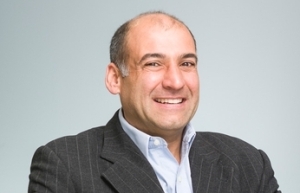Communications service providers (CSPs) are transforming to become digital service providers (DSPs) but to do so they need to move away from the monolithic CEM systems of the past. Mark Edwards, the CEO of MDS, tells George Malim that CSPs are looking to address the entire customer journey by starting with a vision and working backwards to create the platform they need.
The traditional CSP approach was to specify and deploy a series of systems to support customer experience management (CEM). These would involve an often-complex web of systems incorporating CRM, call centre applications, billing interfaces and many others. The complexity of these systems has made it costly and slow to implement alterations and launch new services, particularly those where the value of the service is low or non-recurring.
“A lot of the traditional systems are quite monolithic so it takes too long in terms of time to market to deliver the services that customers want,” says Edwards. “Not only does it take too long; it costs too much because these systems are just not agile enough. Apple and Google Play seem to have the one-time apps market with a model that works well. CSPs can offer more service-centric offers – not just content or apps – but services that have a recurring revenue stream and are tied to network-based service delivery.”
For CSPs to step up and offer these types of service-centric offers, they need to combine the different elements associated with customer experience. “They need BSS that are very agile and offer greater levels of personalisation and can be customised even by the customer,” he adds. “CSPs need to provide greater levels of visibility of the bill to the customer in real-time and provide more agile web shops to deliver and offer services and allow customers to buy the things they want.”
That requires a change in the process and approach by CSPs. “The support side, rather than being centred around the call centre needs to be more self-care based,” explains Edwards. “Customers want that and it’s more cost effective for the CSP to provide selfcare. The new approach is a combination of how apps and services are offered through the experience on the device, the flexibility of the billing system and self-care and the integration of all that in real-time.”
“A number of CSPs recognise this challenge and are making changes to introduce these components so they have a billing system that is more customer centric along with much more adept service portals to allow greater integration,” adds Edwards. “Another key aspect is analytics because it’s critical for a CSP to have real-time actionable insights in order to offer the most relevant services to customers.”
CSPs are therefore looking at new approaches to CEM. “Service providers need to – and some are – thinking more about the customer journey and how that experience is for their customers throughout the lifecycle,” he says. “They are starting to create a vision of CEM and work backwards from that in terms of the solutions they buy.”
CEM investments aren’t just about increasing customer satisfaction, there is also a revenue angle that CSPs are pursuing. “Customers are satisfied when the service they receive is of a good quality but they’re also satisfied when a relevant offer is made to them in a timely fashion,” says Edwards. “In the past, the whole process of service delivery platforms, which could be quite cumbersome, could mean the cost of delivery for services could be quite high. That presented a relatively high entry point for the costs of services and limited CSPs’ opportunities.”
“With a more real-time billing capability and the other elements we’ve talked about, the cost to deliver or serve is significantly reduced and becomes a few cents versus euros,” he adds. “That opens up possibilities to enter into micro economies where services might have a short life.”
Edwards gives the example of offering a roaming bundle to travellers or pushing a short offer to a user while they are engaged in a specific activity such as if they’re watching video and reaching the end of their data package. A simple push message could be sent saying: Video data upgrade €2 yes or no? In that scenario, everyone wins because the marketing is not intrusive, the user gets to continue with their session and the CSP makes a little more revenue.
Such opportunities and models will proliferate as CSPs continue the transformation to become DSPs. “CSPs are trying to get into the business of offering more timely services,” confirms Edwards. “Users are willing to pay €2 a day or an hour for specific services when they need them but, to make the right offers, relevance and timing are key. You need information about the customer to know what they like, what their preferences are and what they’ve bought before. Even if it’s aggregated information across a demographic, it still becomes extremely important.”
Edwards thinks CSPs’ direction of travel is set towards this. “This absolutely is the evolution that needs to happen,” he says. “There are different stages of advancing to become DSPs and most CSPs recognise it’s not about providing a data pipe, it’s about understanding users’ contexts in terms of their data usage and quality of service.”
He singles out the recently launched iD MVNO by UK electronics retailer Dixons Carphone Warehouse as a good example of a provider that looks more like a DSP than a traditional CSP and MDS is helping others on similar journeys.






